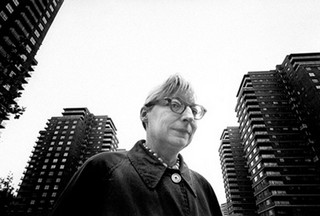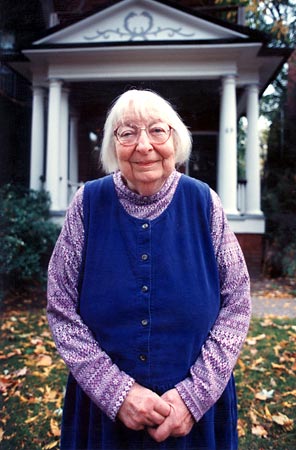
Jane Jacobs, a hero to many an urbanist, was born one hundred years ago today. This weekend, Seattle is celebrating with “Jane’s Walks” throughout the city, daring to blend historical education, exercise, urbanism, and honoring the legacy of Jane Jacobs into one easy-to-digest package. Look for more details on a walk near you here. They are staggered throughout the weekend so you can attend multiple walks if you’re feeling ambitious.
- Friday 3:30 PM – Meet at MOHAI – South Lake Union
- Friday 4:00 PM – Meet at HIng Hay Park – Chinatown/ID
- Saturday 9:00 AM – Meet at Hotwire Coffee House – West Seattle Junction
- Saturday 10:00 AM – Meet at Jefferson Community Center – Beacon Hill
- Saturday 2:00 PM – Meet at Beacon Hill Light Rail Station – Beacon Hill (same walk)
- Saturday 10:00 AM – Meet at Riverside Memorial Park – Duwamish
- Saturday 10:00 AM – Meet at West Woodland Elementary – Northwest Seattle
- Saturday 12:00 PM – Meet at Lower Kinnear Park – Uptown
- Saturday 1:30 PM – Meet at 1st Ave and S Jackson Street Streetcar Stop – First Hill
- Sunday 10:00 AM – Meet at Caffe Umbria – Pioneer Square
- Sunday 11:00 AM – Meet at Westlake Park – Downtown
- Sunday 12:00 PM – Meet at Waterfront Space – Waterfront
- Sunday 2:00 PM – Meet at Pete’s Garden – Eastlake/Capitol Hill
To many urbanists (and I include myself in this) Jacobs’ The Death and Life of Great American Cities is a fundamental and indispensable text. Often it may have taken a mere curiosity and launched a young thinker into the storm-tossed sea of urbanist advocacy. Her last book published in 2004, A Dark Age Ahead, was just as brilliant and serves as a timely reminder in her last years (she died in 2006) to redouble our efforts to improve our cities, to live more sustainably, and to cut back on suburban sprawl growth pattern so that we might avoid an ecological disaster of biblical proportions.

“Not TV or illegal drugs but the automobile has been the chief destroyer of American communities.” ― Jane Jacobs, Dark Age Ahead
Jacobs wasn’t just a writer though; she walked the walk through advocacy, too. Her biggest success in that regard was leading the community effort to block New York developer Robert Moses from plowing an urban freeway (the Lower Manhattan Expressway) through Greenwich Village despite repeated pressure to do in the 1950s and 1960s. Jacobs helped redefine “urban renewal” efforts of the era for what they were: community degradation through racially motivated neighborhood clearance, property grabs, and parking and highway-building obsession.
In 1968, fearing her sons being drafted into the Vietnam war, she moved to Toronto and lived there until her death. There she helped stop plans for the Spadina Expressway in Toronto and continued her political advocacy and writing, publishing several more books.
Today Jacobs’ legacy lives on. The same battles are playing out to clear expressways from our precious urban spaces. We are chasing the same hopes of inclusive, less top-down planning process that engages activists on a more even playing field with technocrats and city powerbrokers. The pedestrian realm is still a mess; Vision Zero is much more of a dream than anything close to a reality, so the fight continues.
Doug Trumm is publisher of The Urbanist. An Urbanist writer since 2015, he dreams of pedestrian streets, bus lanes, and a mass-timber building spree to end our housing crisis. He graduated from the Evans School of Public Policy and Governance at the University of Washington in 2019. He lives in Seattle's Fremont neighborhood and loves to explore the city by foot and by bike.


